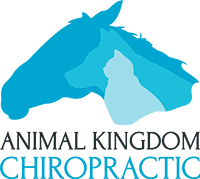There are a few things to consider if your horse exhibits some lameness. The first step in treatment is a veterinarian check to rule out possible pathology.
90% of all lameness is due to a lack of engagement. Engagement will be affected if the joints of the spine and extremities lack proper motion and flexibility.
All motion units in the legs need to be stable, otherwise the stay apparatus won’t function properly, causing energy to leak out of that joint. This is a major cause of lameness, which will lead to soft tissue pathology. The important thing to consider is that the flexibility and health of the spine ultimately determines the condition of the extremities.
Once the spine is adjusted, especially the lower cervicals and withers, we look to the knees, accessory carpal, and fetlock.
The elbow and forearm is often times overlooked as a source of lameness.
Proper shoulder biomechanics are important in a horse’s movement. The front legs carry 60-65% of the body weight, therefore the shoulders must be able to absorb a great deal of concussion. Improper shoulder angle will cause the foot to hit the ground harder, which can cause concussion lameness.
Checking the entire spine is necessary in order to address all possible subluxations and to ensure proper nervous system function. Structure determines function in all cases.
Next time your horse presents with some lameness, get a vet check and referral, and then enlist your licensed and certified animal chiropractor!
